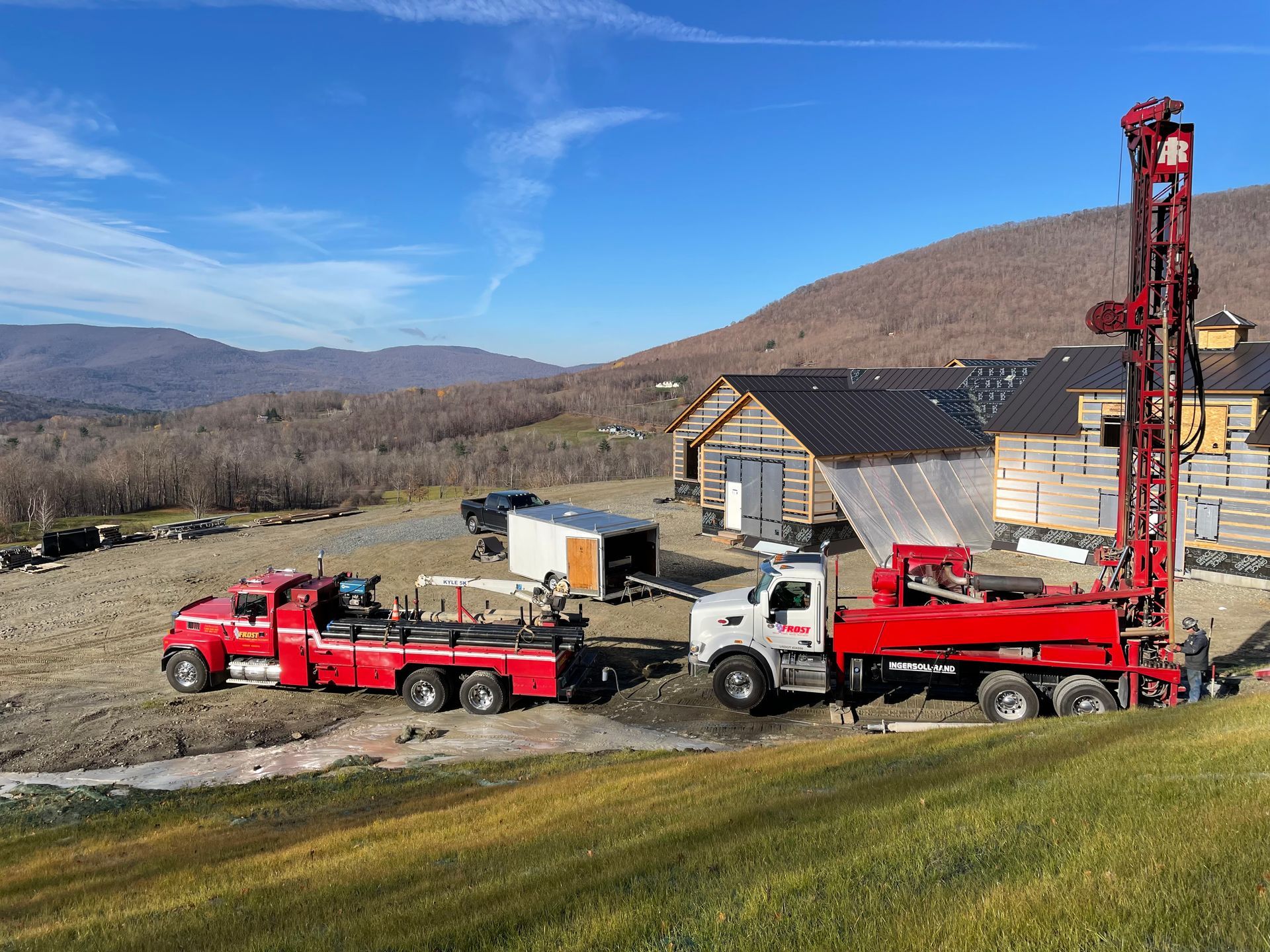Well Installation & Service
Whether you are moving into a new property or trying to refresh an old one, Frost Wells and Pumps, Inc. can help you get easy access to clean water with little to no hassle.
Location
The first step in the well installation process is choosing a well location. One of our site technicians or engineers will site the well, taking into consideration factors such as:
- Isolation distance requirements established by each State
- Underground utilities
- Equipment access to the site
- Overhead access for the rig tower.
Once the well is sited, we dispatch the driller and equipment to the property. We set the rig up on the chosen location and begin by drilling an 8 ¾ inch hole until we encounter either water or bedrock. If there is no water above the bedrock, the driller then drills a minimum of twenty feet into rock.
Once this stage is complete, we install a six-inch steel well casing to seal out groundwater contaminants. Then we continue drilling with a six-inch drill bit until we have attained sufficient water. We develop the well to remove all drilling material from the well hole, and finally, we install a water-tight well cap on the six-inch steel well casing that extends roughly 18 inches above ground.
The average well in Southern Vermont is approximately 300 feet deep.

Hydrofracturing:
If you are dealing with a low-yielding bedrock well and can’t get enough water, our hydrofracturing can help. We pump pressurized water through the well into the bedrock formation at levels as high as 3500 psi to increase the size or number of water-bearing fractures supplying the well.
First, we remove any existing pumps or piping from the well, then place the packer a minimum of 80 below ground to seal off the top of the well and prevent surface contaminants from entering the well. The packer is then inflated, and we pump clean pressurized water through the packer into the well. The water pressure in the well will continue to rise as the rock formation resists the pressurized water flow; this increased pressure will force the fractures in the bedrock to widen and/or become longer, as well as removing sediment and mineral buildup that may have settled in the fractures. The water pressure will then drop and the water will normally exit through the walls of the well.
If the hydrofracturing procedure is successful, the main sign is a drop in water pressure. Once we confirm success, we deflate the packer, remove the equipment from the well, and re-install the pump and piping.
The hydrofracturing process has been more than 95% successful in increasing well yields. A yield test can be performed after the hydrofracture to determine the success of the procedure.





